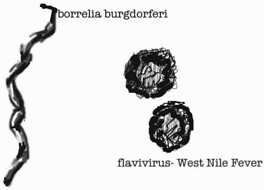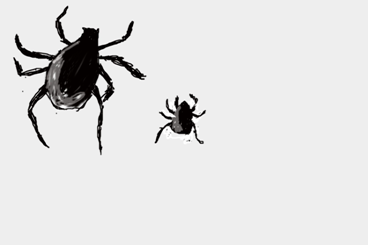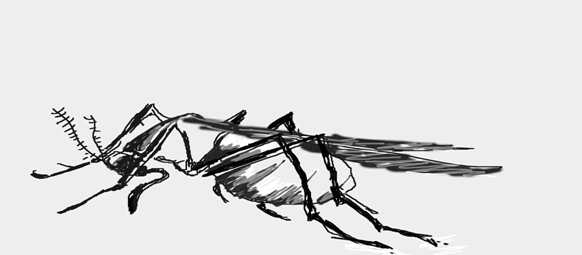Kathleen Z. Rooney
Both diseases that we will study are vector borne. WNV is an arbovirus, or a virus spread through the bite of an arthropod, in this case a mosquito. Lyme disease is caused by a bacterium called Borrelia burgdorferi (Bb), which is carried to humans in the bite of a tick. Both exist in a complex matrix of vectors, hosts and reservoirs. To understand this cycle, we need to understand the specific vocabulary of this phenomenon. A vector is the organism (mosquito or tick) that carries the disease in its body and transmits it to the host. In our study, we are generally concerned with the human hosts, although both diseases affect other animals who could be considered hosts as well. A reservoir, sometimes known as an intermediary host, is an organism that carries the pathogen in its body but is usually unaffected by the disease itself. This host maintains a supply of the pathogen from year to year to be picked up by new generations of the vector's organisms.

Figure 1: Borrelia burgdorferi and flavivirus
On the east coast, the Lyme cycle follows the two-year life cycle of the black legged tick (Ixodes scapularis). This tick, commonly known as a deer tick, hatches as a larvae from an egg in midsummer of the first year and seeks a blood meal from a small animal such as a mouse, bird or chipmunk. These small rodents are reservoirs of Bb. The infected larva falls off the rodent and will wait for the following spring to molt into a nymph. In spring, the nymph seeks a host, this time perhaps a larger mammal such as a human, raccoon or deer. If the nymph was not initially infected, it may become infected at this meal, while attached to an infected host. If the nymph is infected (as many are) it may pass Bb to the host. The nymph molts into an adult, who again seeks to feed on a large mammal, yet another opportunity to transfer the bacteria. The adults will mate, feed, and fall off to over winter and lay eggs in the spring, completing the cycle.
1

Figure 2: Deer tick (Ixodes scapularis) - Adult on left, nymph on right
In the New Haven area, the mosquito most commonly associated with the transmission of WNV is the common species Culex pipiens. This mosquito has a statewide presence in Connecticut. The life cycle of all mosquitoes are tied to water, but unlike swamp dwellers, this mosquito can grow readily in artificial containers of stagnant water and is adapted to polluted water. Mosquitoes grow from egg to larva to pupa, all in the water. The process can take from a couple of weeks to a couple of months to pass through all three stages. At the end of the pupa stage, a mosquito emerges as an adult that can fly. Most female mosquitoes live for 1-3 weeks, while males have a much shorter life. It is, however, the females who are of concern because they seek blood in order to reproduce. The adults acquire the virus from reservoir species like the American robin. Culex pipiens prefers birds as hosts, but will bite humans, particularly in the evening.
2
A previously infected mosquito can transfer the virus to a human host through a bite.

Figure 3: Culex pipiens mosquito